LG G2 OLED Reviewed at $1,999.00 (55")
Product Name: LG G2 OLED
Product Description: 2022 4K OLED TV
-
Design - 9.2/10
9.2/10
-
Video Quality - 9.5/10
9.5/10
-
Ports & Connectivity - 9.4/10
9.4/10
-
OS, Apps and Features - 9.5/10
9.5/10
-
Price / Quality - 8.9/10
8.9/10
Summary
Reviewed at $1,999.00 (55″)
Pros
- Amazing black levels
- Great SDR and HDR peak brightness
- Full gaming support
- Plenty of online and offline features
Cons
- No HDR10+
- No DTS support
- No 120Hz BFI
- No furniture stand included
Cheapest Places to Buy :
*We are a reader-supported website. When you buy through links on our site, we may earn a small affiliate commission at no extra cost to you. Home Media Entertainment does not accept money for reviews.*
If there is a name that has been connected with OLED technology like no other that would be definitely LG as their OLED TVs have been in the forefront for many years now and have won the hearts, and wallets, of many home theater fans. So today, in our LG G2 OLED review, we finally have the chance to try out their new 2022 flagship OLED which comes with a few upgrades over last year’s release.
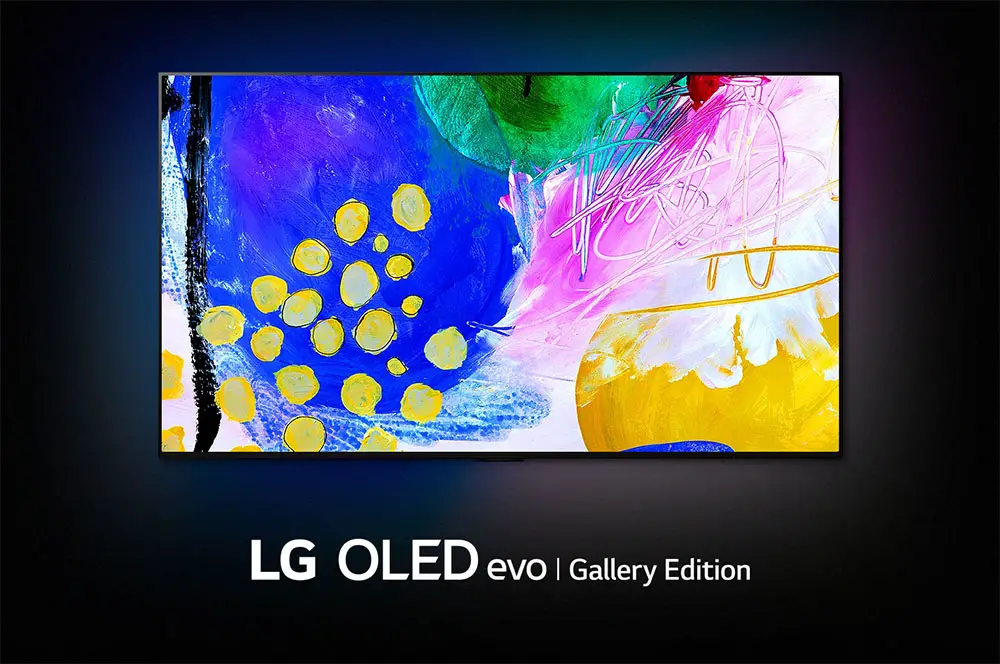
The G2 OLED belongs in LG’s Gallery series and along with LG C2 OLED they come with the OLED Evo certification which indicates an improved panel is used this time around. In reality the G2 and C2 have more in common than you may think as they share many of the premium technologies LG has in store for 2022. But they also come with 2 major differences that will analyze a bit further down our article.
So what does the LG G2 OLED has to offer? As we said, the G2 comes with the OLED Evo branding combining an improved OLED panel with a metal heatsink and LG’s Brightness Booster Max technology. It uses the new a9 Gen 5 AI processor, features a 100/120Hz panel, has four HDMI 2.1 ports at full 48Gbps bandwidth, supports the usual HDR10, HLG and Dolby Vision HDR formats and for its OS is using the latest webOS 22.
The G2 seems like a slightly beefed up C2 as the metal heatsink allows it to push the brightness slightly higher than the C2. Does this makes a huge difference, and what other major or minor upgrades did we notice compared to the fan favorite C2? Keep reading to find out.
Design
The G2 OLED belongs to LG’s Gallery lineup and is probably the only TV that doesn’t feature a standard stand as it is meant to be hanged on a wall mostly. Design wise the TV looks lovely with very thin borders and very good quality of materials.
Looking it from the side you will immediately notice that the G2 is not following the standard design of most OLED TVs, that is an extremely thin panel along with a thicker electronics box. Its thickness, which was measured at 0.98″ (2.5 cm), was spaced evenly along its entire surface and only towards the sides and the top it features thinner edges.
Its borders are also extremely thin making the screen look very immersive while the black lines around the image are almost non visible here. The back side of the TV is made of brushed textured metal with silver metallic edges.
All ports are placed on the right side separated into two groups with some of them looking sideways while the rest look downwards. Only the power connector is separated from the rest as per usual in most TVs. The back of the TV also features special grooves and clips for better cable management.
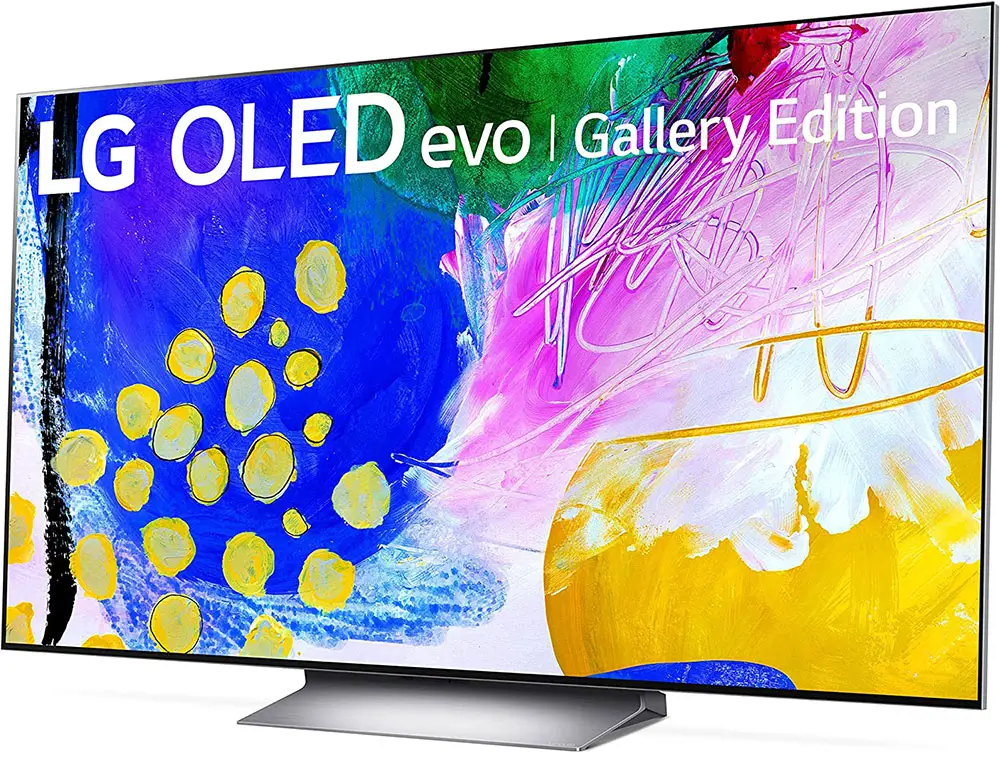
As we mentioned above the G2 OLED does not feature a usual stand and only includes a wall mount. LG has created a furniture stand for the G2 but this you will have to buy separately so be prepared for the extra cost. Also keep in mind that this stand will make the TV bend slightly backwards, probably for better reflections handling. It does look a bit strange the first time you see it but after a while you are not going to pay attention to it.
As for the remote, this is exactly the same one we saw in the C2 so no real surprises here and to be honest the one provided is really good as LG had made slight updates on it last year.
All functions remain the same with LG’s unique pointer system, the same universal remote functionality and smart features. Also the reduced number of buttons is a welcome one while we still get six dedicated buttons as before.
Closing this part of our review we can say that the LG G2 OLED is a fine looking TV. It is a bit different than the other OLEDs you usually see and the fact that you have to buy a stand separately may be a small nuisance, especially if you count every cent in your wallet, but other than that the TV looks and feels like a real flagship.

Video Quality
Processor technology used
The processor used in the G2 OLED is exactly the same one we saw in the C2 so in terms of pure processing the two TVs are almost identical. In 2022 LG brought the a9 Gen 5 processor which in theory is an upgrade of last year’s Gen 4 variant. What exactly have changed we don’t know as all manufacturers are pretty secretive of exact details of their chipsets.
But as always AI is the key word for one more year as LG is heavily promoting the AI processing capabilities of these chips that use a combination of machine learning algorithms in conjunction to a huge image database in order to offer an improved overall image and superior AI upscaling.
The a9 processor features a few interesting technologies that are included in LG’s AI Picture Pro and AI Sound Pro suites. As such for image we get face enhancing technology, AI upscaling, object recognition and enhancement along with specific scene analysis.
The 5th generation of this chip includes Dolby Vision IQ with Precision Detail which according to LG can accurately adjust the light levels of every area of the screen in order to increase contrast, sharpness and detail of Dolby Vision content.
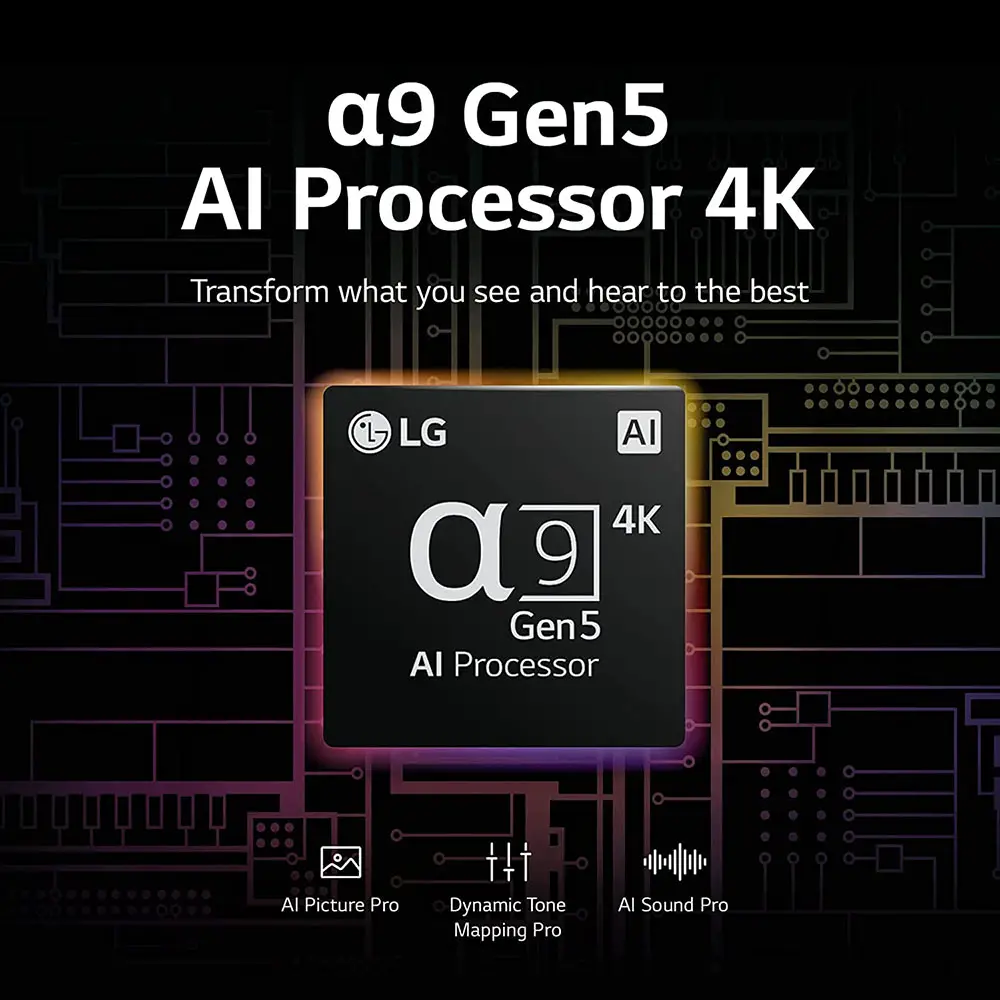
In this part of our review we tested the TV’s upscaling capabilities by trying various content in different resolutions from low quality broadcast material and 480p videos up to 720p and 1080p content. During these tests we didn’t notice any artifacts and everything upscaled nicely to 4K resolution.
In general we would say that the G2 OLED behaved pretty much the same as the C2 and both TVs seem to be equally good in this part.
In terms of audio we are going to talk in more detail in our dedicated section below but the a9 Gen 5 brings a small upgrade as it can do 7.1.2 up-mixing instead of 5.1.2 channels that was previously possible along with the rest of the standard features like voice enhancement, auto volume leveling and more.
Lighting technology used
As was the case with the C2 OLED, the G2 OLED comes with a new WBE OLED panel, which seemingly is called OLED Ex, and compared to the old WBC ones it is advertised as being able to output more brightness and be less prone to burn-in.
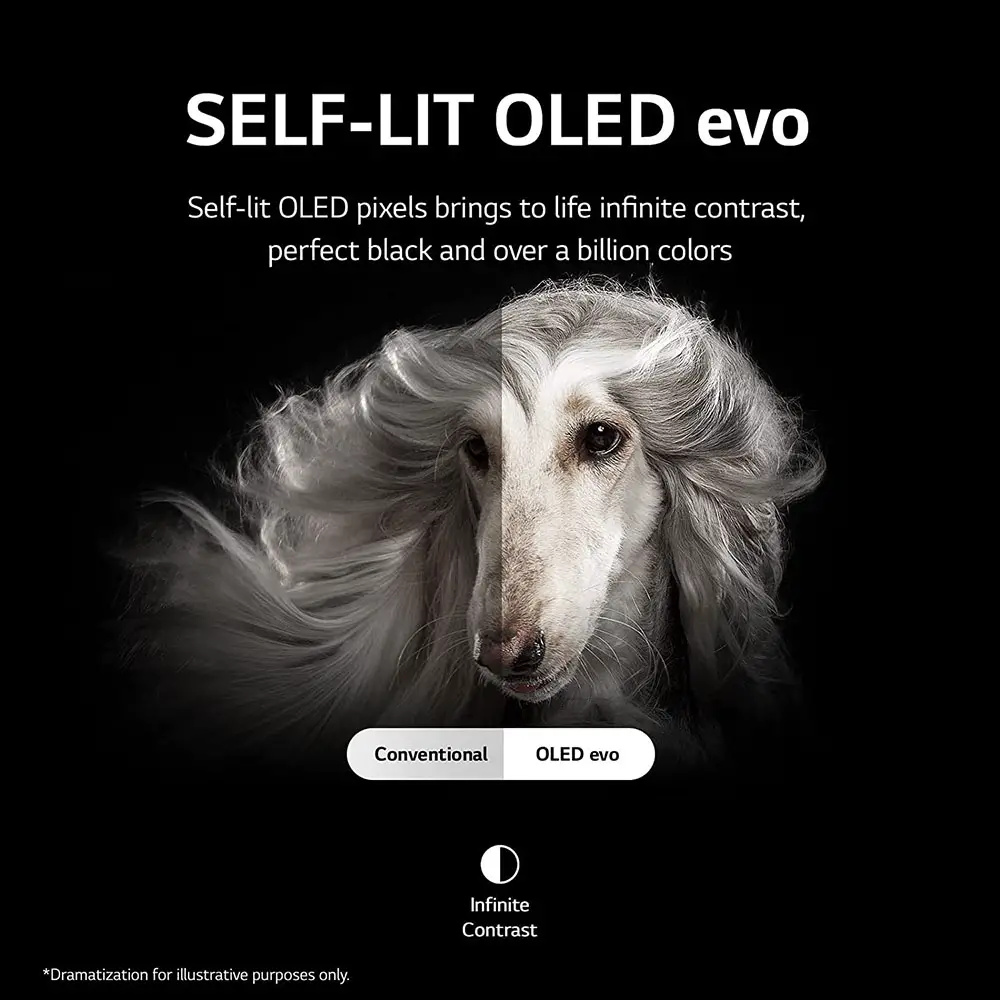
OLED panels feature self emitting pixels and as a result these TVs have no need for a backlight as we see in LED LCD models. Being able to control it’s individual pixels has many advantages with the most obvious ones being the extremely accurate light control and the infinite contrast they have with deep blacks being a sight that needs to be seen to be believed.
One of the main problems of LED LCDs is that they have what is known as blooming that creates bright halos around very bright objects when seen in dark backgrounds. The G2 has no such problems as with its self emitting pixels it can accurately light the areas of the screen that are needed.
The G2 comes with the OLED Evo branding which was previously thought to be just a better panel but it seems to be a combination of the improved OLED Ex WBE panel, better processing and more refined algorithms in order to up the brightness and display better colors than previously possible in traditional OLED TVs.
Unfortunately no technology is perfect and while OLED has so many advantages it’s also more prone to permanent burn-in. Naturally if you watch different types of content the risk is much smaller but LG has also included a few features that can help minimize the risk of this happening.
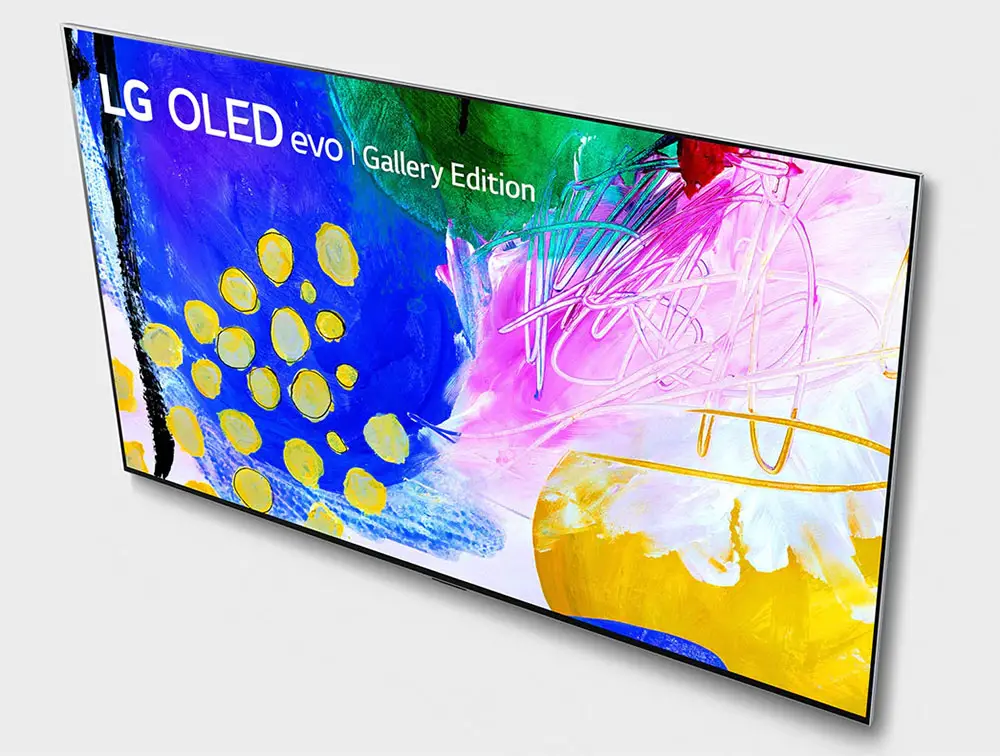
In our blooming test patterns the G2 OLED did perfect as you should expect from an OLED TV. Being able to see a bright object in a completely dark background and don’t have any blooming on sight is a real treat and shows the strength of OLED even after so many years in the market. Nothing more can be said here. If blooming is your number one problem OLED is your only way to go and the G2 OLED does perfect in this regard.
Brightness / Contrast
With the G2 OLED it is the first time LG is using a heatsink in combination with the new and improved OLED panel in order to push the brightness in higher numbers. This is a proven technology that was first developed by Panasonic and subsequently used by others like Sony in their A90J last year. So it is interesting to see it now in an LG OLED in 2022.
After deciding on the best settings, peak brightness in SDR mode on a 10% window was measured at 461 nits which is good but not spectacular. But as always brightness requirements in SDR are never high so this number surely is more than enough.
Now, in HDR mode the brightness we measured in a 10% window was 973 nits which is really good and is far beyond what any LG OLED could achieve before, including the recently reviewed LG C2.

Keep in mind that the Automatic Brightness Limiter (ABL) is a bit on the aggressive side in most LG TVs and with large bright scenes it will kick in and lower the peak brightness after a while. By turning off the Peak Brightness setting you can somewhat limit this effect but on the other hand peak brightness will be limited to far lower levels than what the TV can really do.
Brightness levels followed the EOTF reference values very close up to its relatively sharp roll-off point although we did notice some very minor deviations.
As for contrast having an OLED panel means that the G2 OLED can switch off its pixels entirely meaning it gains almost infinite contrast ratio resulting in true deep blacks compared to greyish blacks we see in many LCD models while its panel uniformity was also extremely good.
One thing we should mention is about permanent image retention which is a hot topic among OLED fans. Although the last few years things have immensely improved compared to some of the first generation OLEDs the risk is still there so just to be on the safe side you should never leave static images for an extended period of time and always turn on any burn-in prevention systems the TV has.
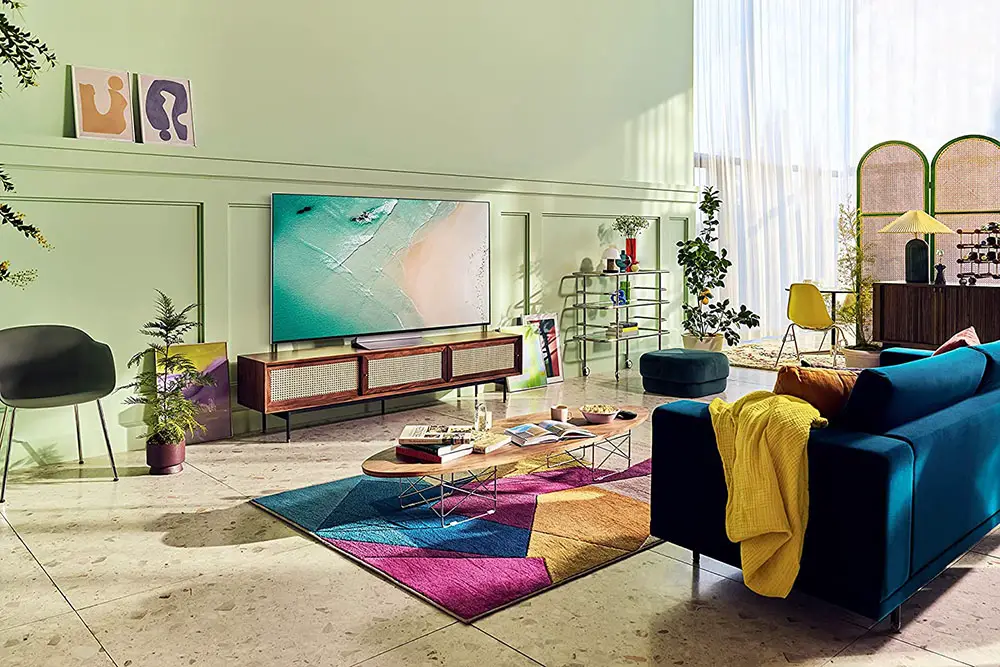
The G2 OLED did great here. It proved that it is not only brighter than the C2 but also it is the brightest OLED LG has produced to this day.
Viewing angles
Another advantage of OLED technology is the extremely good viewing angles it can achieve with this being another area where LED LCD TVs fail to achieve the same results and have to rely on extra layers in order to somewhat improve on this but never can reach the numbers we see with OLED panels.
The LG G2 OLED is capable at retaining its brightness, color accuracy and black levels at very respectable levels up to 45 degrees of angle with a maximum of 50 degrees before image starts to degrade too much. Not much difference here compared to many other OLED TVs and any minor differences there are, are not very noticeable with naked eyes.
Also the TV’s glossy finish handles reflections remarkably well and will lower the intensity of all lights in the room at a respectable level. As such the G2 OLED performs exceptionally good even in a bright room.
The G2’s amazing viewing angles and reflections handling makes it an excellent choice not only for home theater rooms but also for any family setup with all family members sitting in different positions in the living room.
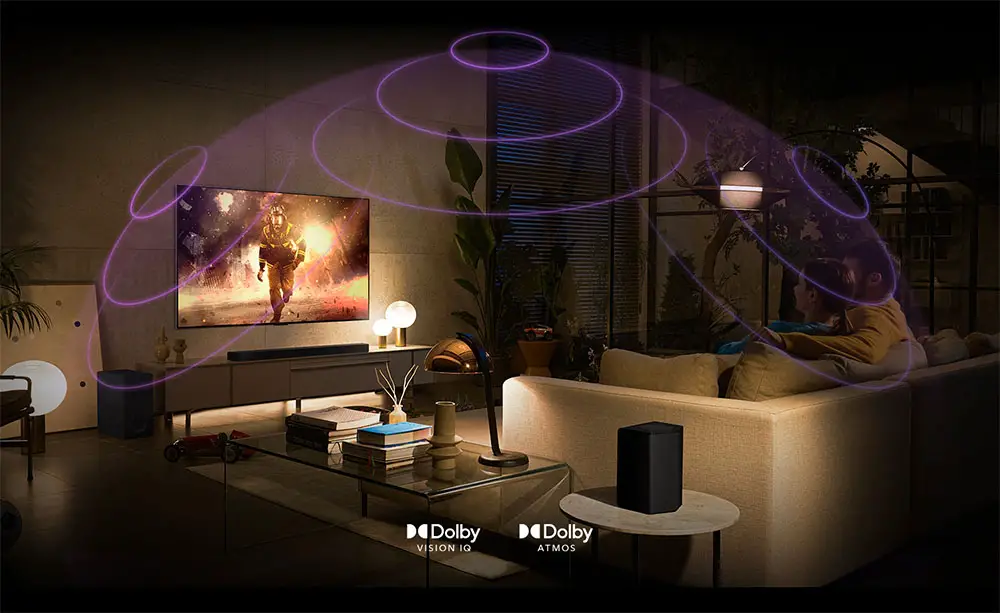
HDR support
Not much have changed in the HDR front for one more year as LG continues to support the same HDR protocols as before and they have pretty much stayed firm behind the Dolby Vision bandwagon the whole time. As such the G2 OLED comes with support for the basic HDR10 that is needed for 4K UHD playback, it also supports the more advanced Dolby Vision which uses dynamic metadata for more accurate HDR representation and HLG that is used mostly for broadcasting.
The obvious omission is HDR10+ and we don’t see LG supporting it in the foreseeable future in any of their releases as this is pretty much Samsung’s territory while it seems to be also missing the Advanced HDR by Technicolor but this is hardly an omission as there was no real support for it to begin with and LG abandoned it a couple of years ago.
Dolby Vision IQ is making a return once again and this basically uses an external light sensor on the body of the TV and can automatically adjust the Dolby Vision dynamic tone mapping according to the ambient light in the room and also according to the material that is displayed on screen at each moment. Obviously this can be turned off if you don’t want the TV to go ahead with such processing that can really change the final outcome of the image.
Dolby Vision IQ with Precision Detail can improve even further image quality for all material that use Dolby Vision and not only content made specifically for that.
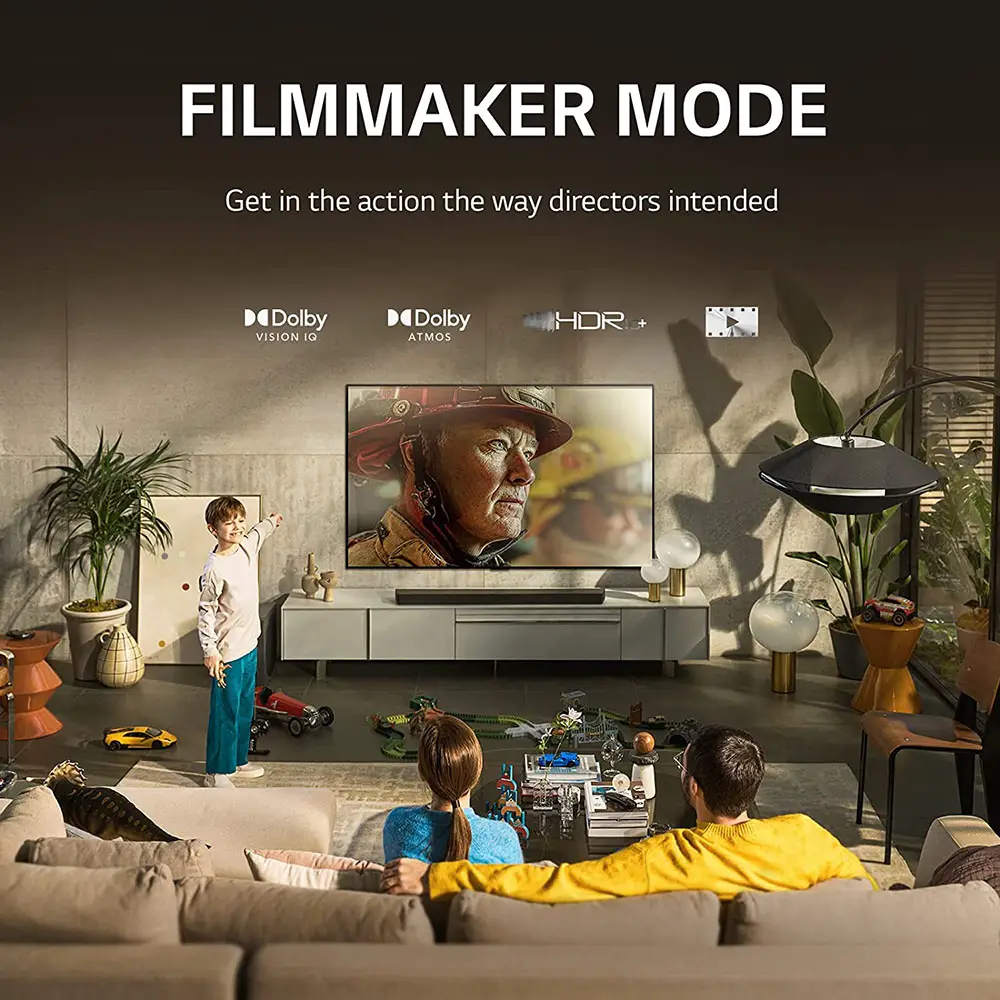
Color coverage
Next we will be looking at the G2’s color performance as its OLED Evo technology is used to produce more lifelike colors than ever before, at least according to LG’s marketing material.
According to our measurements the LG C2 covers about 99% of the DCI-P3 color space which is excellent. On the wider REC.2020 color space we got 76% coverage which is exactly the same numbers we measured in our C2 review.
Color accuracy was very good even without calibration, as most colors having values below the DeltaE limit of three, but there were a few issues with white balance and gamma that if addressed would make the image look even better. After calibration everything was improved, resulting in a very accurate images overall.
Color gradients were great although we noticed some very minor banding in some darker colors, just as it was the case with the C2. This can be fixed with the Smooth Gradation option but you are going to loose some details on screen if used so always use a low setting on this.
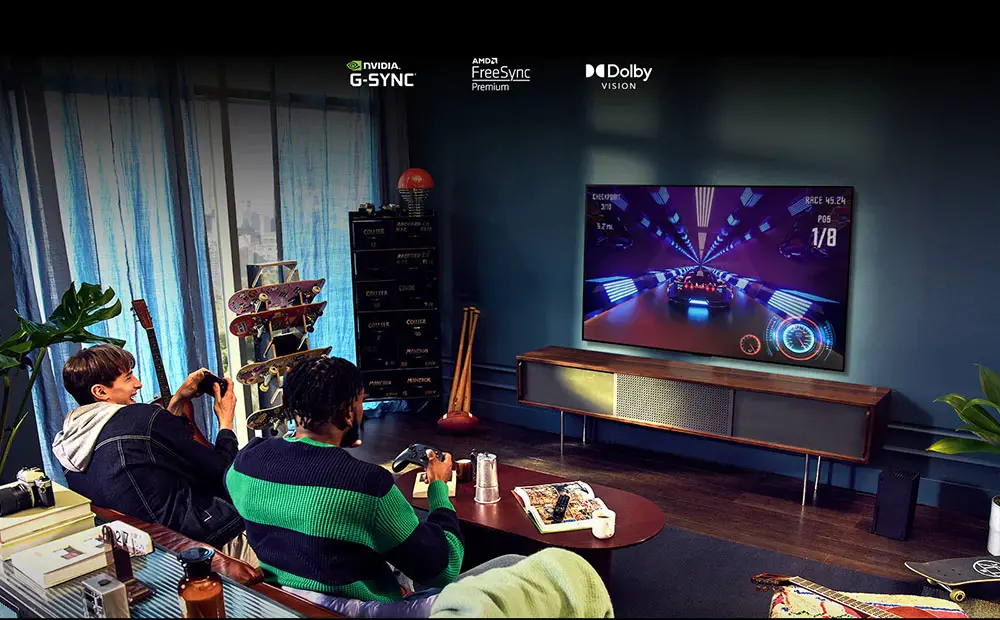
Motion performance
Since both the C2 and G2 come with extremely similar hardware it meant that in terms of motion performance and input lag they should behave extremely close to its other, if not exactly the same. And from what we experienced we can confirm that there are no noteworthy differences between the two.
When it comes to it’s motion performance the G2 features what LG calls OLED Motion Pro and is using a 120Hz panel. But being an OLED it doesn’t need a backlight to light its pixels and while in theory this makes the G2 flicker free in reality this is not the case but the flicker is so small that is not visible to the naked eye.
The TV also comes with the usual Motion Interpolation features that can smooth motion and remove blur and judder from fast camera movements. Motion interpolation did a good job overall as there was only minor artifacts noticeable from the process and these were mostly due to the very fast camera moves depending on each scene. Comparing similar scenes in the C2 would not reveal any visible differences with naked eyes.
Obviously using very aggressive settings will make the “Soap Opera Effect” to appear so you have to adjust the settings accordingly. Motion Interpolation can be enabled by the TruMotion setting in the menu. You can set that to user and then adjust the De-blur and De-judder sliders according to your preferences.
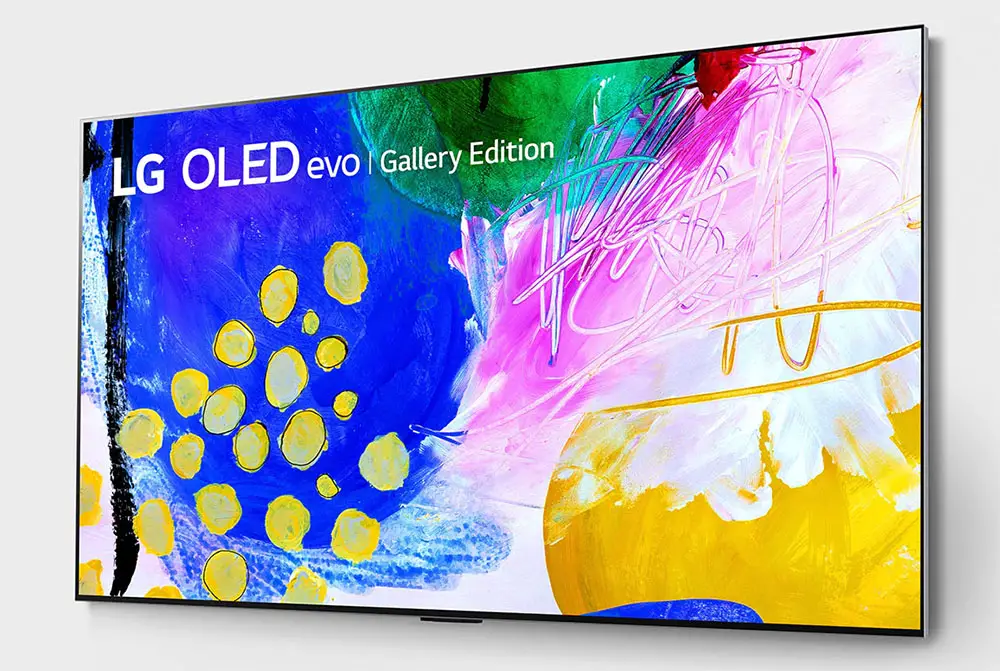
There is also the standard Black Frame Insertion (BFI) feature which basically is a motion interpolation technique that inserts a black frame between every two individual frames and this can really create much smoother motion.
But while the end result is pretty good there are some downsides to this with the most obvious being the lower brightness being displayed due to the black frames and introduction of judder in 24p content. BFI can be enabled from the OLED Motion setting in the TruMotion menu.
As was the case with the C2, it seems that LG has removed the different intensity levels and there is only a single on/off toggle. As a result the LG G2 cannot do 120Hz with BFI. The reason for this is not know but you should be aware of this actual downgrade as now the TV can only flicker at 60Hz.
Input lag
All LG TV comes with amazingly low input lag values so we were not expecting anything different from their 2022 flagship.
According to our measurements the G2 measured an average of 10.7ms input lag in both 1080p and 4K resolutions at 60Hz with the Boost mode selected in the Prevent Input Lag menu. Without it input lag will go higher around 3ms. At 120Hz we measured 5.4ms in both 1080p and 4K resolutions which is really as good as it can get, ensuring an amazing gaming experience without any delays.
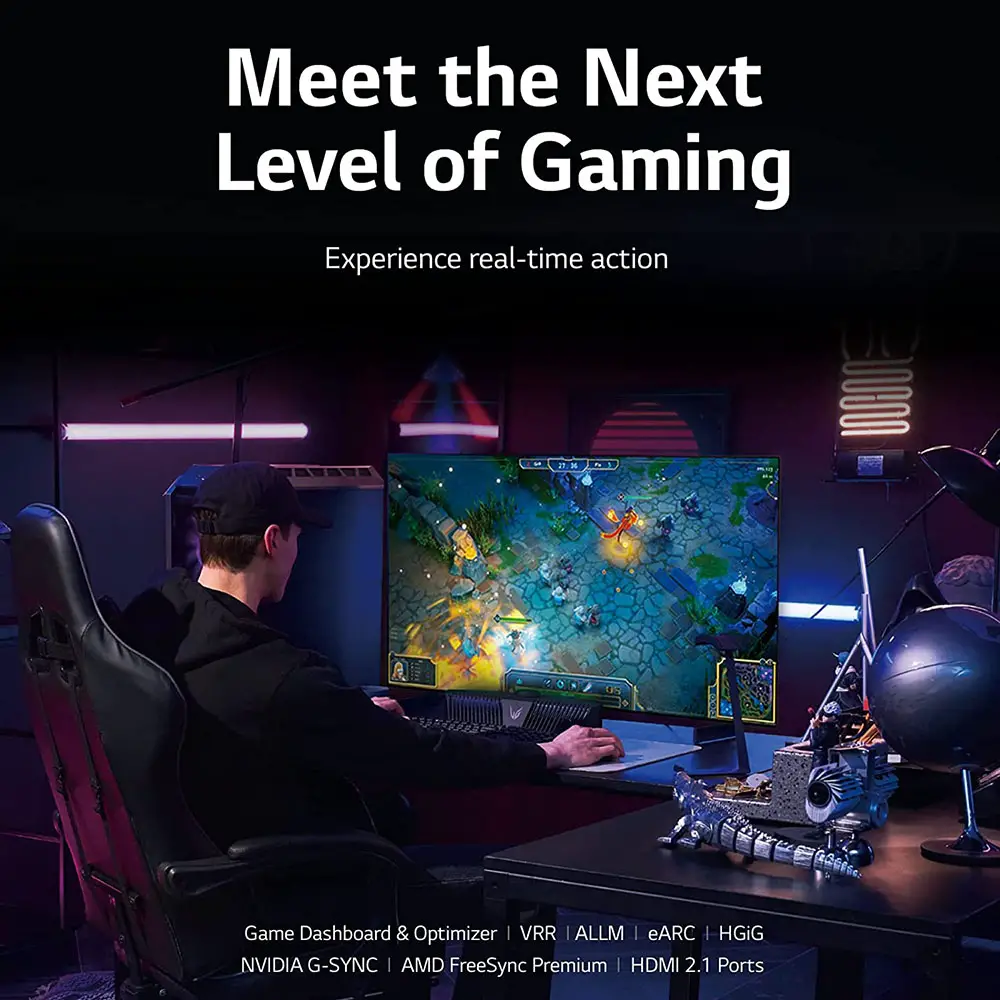
With such low figures gaming can really be a pleasure but in order to get such a low value you have to keep in mind that you need to use the available Game mode as outside that the input lag will greatly increase to around 90.1ms.
We should also not forget to mention that the TV supports Auto Low Latency Mode (ALLM) that can be used with any devices that support that like the PS5 and Xbox consoles and can greatly benefit users. Once again we get HGiG Mode which is HDR Gaming Interest Group’s technology that ensures you enjoy HDR games the way that their creators and developers intended.
The G2 comes with support for all VRR technologies including HDMI Forum VRR, AMD FreeSync and NVIDIA G-Sync and can be enabled in the Game Optimizer menu.
One problem that we have noticed in the G2 is VRR flickering in high framerate content although the G2 comes with a Fine Tune Dark Areas option in the Game Optimizer menu in order to somewhat improve this.
Unfortunately this problem seems to be a general problem of OLED technology and not one in the G2 OLED in particular. It is not such a deal breaking one as it is more noticeable with static dark images and most of the time during gameplay you will not even pay attention to it but nevertheless it should be mentioned in case you notice it.
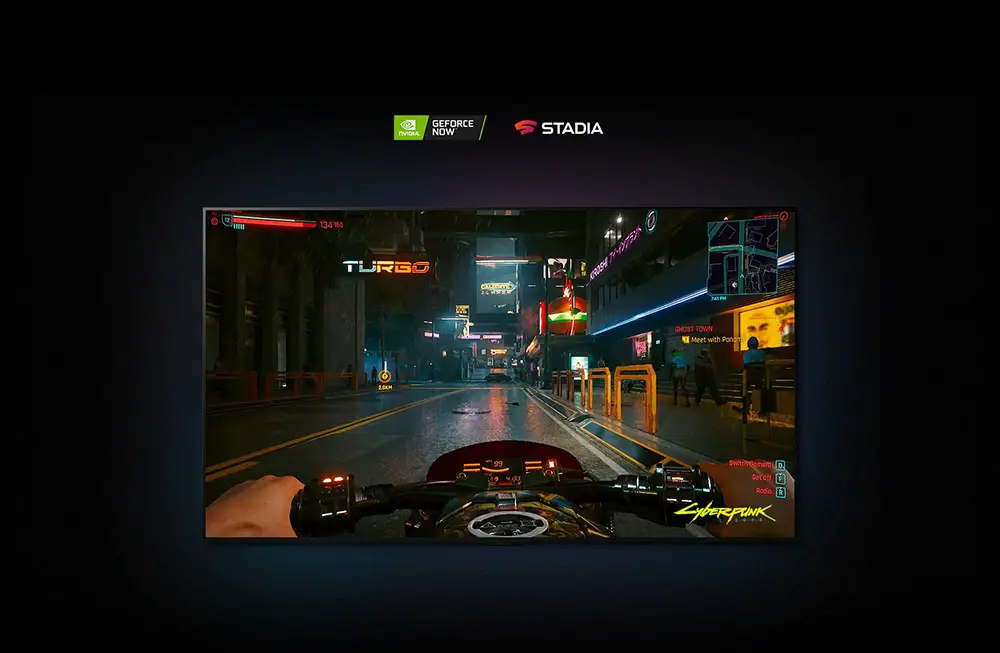
And since we are into gaming we should not forget to mention that the G2 does great with cloud gaming as it supports both Google Stadia and Geforce Now. Obviously you will need to have the appropriate subscription and gamepad but having built-in support is one more element of the G2’s strong gaming capabilities.
Before moving on we connected our PS5 to the G2 and tried a bit of Astro’s Playground and Call of Duty: Vanguard as both of them come with VRR support. The result was a completely trouble free experience with blazing fast response times, no visible delays and everything registered immediately on screen. The G2 OLED could not be a better gaming TV.
Image quality impressions
The G2 OLED has outstanding image quality. There are a few quirks here and there but looking at the whole picture, the G2 offers the best image quality from any LG TV this year.
It has amazing brightness for an OLED, lifelike colors, great upscaling capabilities, viewing angles as good as OLED will ever be and comes with all the gaming features you will ever need.
The G2 comes mostly with all the downsides we saw in the C2 and these are no BFI in 120Hz, no HDR10+ and the slightly increased risk of burn-in.
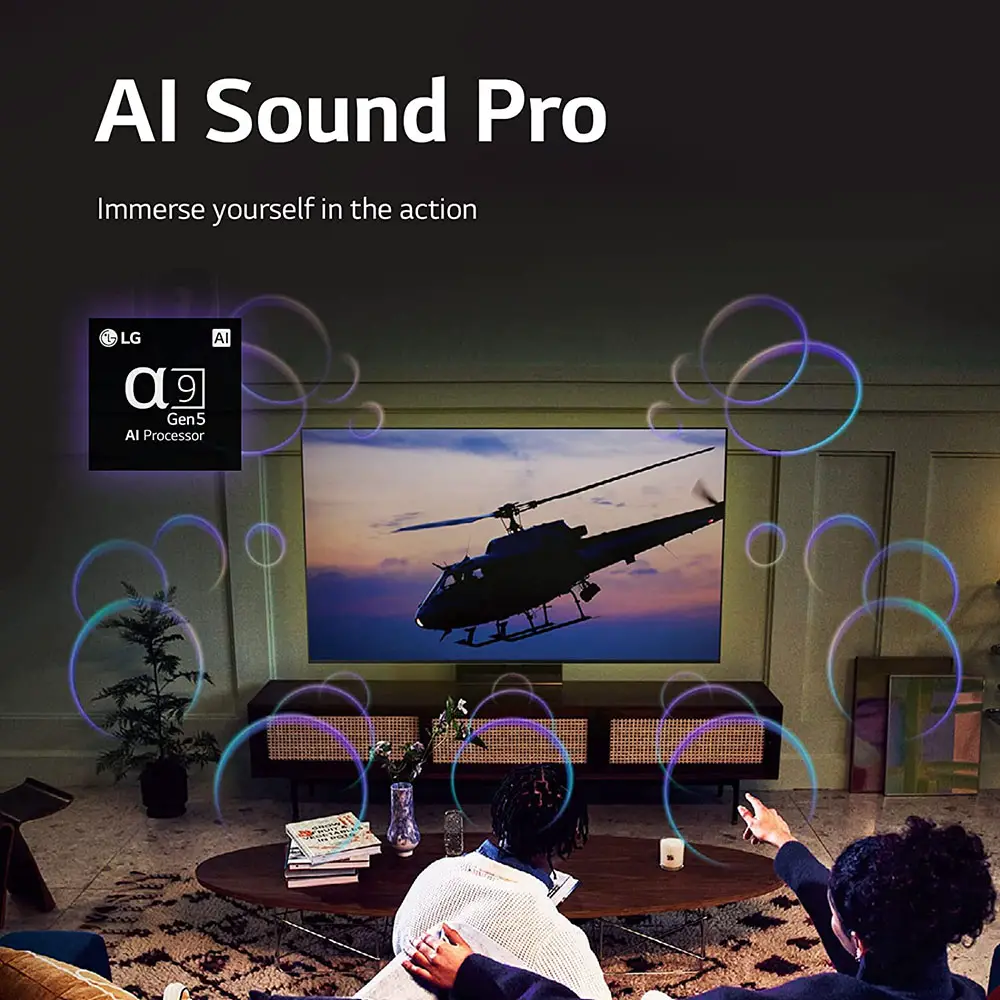
Audio Quality
The G2 OLED is using a 4.2 channels audio system with 60 watts of power that can be good enough for casual use like watching sports, news broadcasting and TV series. Obviously it cannot offer the kind of immersion of a full surround system no matter what features LG has added to rectify that.
A small upgrade we do get this year in the AI Sound Pro mode is that it can up-mix 2.1 channel audio to virtual 7.1.2 surround sound which gives you the illusion of a wider sound stage and more immersive sound. Last year the top LG offerings could up-mix up to 5.1.2 channels but to be honest the difference is negligible. In general we found the AI Sound Pro to improve the acoustic result slightly but this depends a lot on the source material and it will not always be as good as you would expect.
And obviously you shouldn’t be fooled by this 7.1.2 channels marketing thing as the TV cannot really portray a fully immersive surround experience. It just doesn’t have the necessary hardware to do so and virtual technology can do so much. Yes, sound may feel like it has more volume but there is no real activity anywhere else other than the front.
Dolby Atmos is once again available and can be used either through some streaming service or through the HDMI eARC connection. Obviously the TV lacks the necessary hardware to make Dolby Atmos real justice but nevertheless support is there for you to have.

Unfortunately LG continues to avoid DTS and is a real shame for a flagship like the G2. DTS is not supported either with native apps or through the eARC port so in case you really want this then Sony is the only of the big three that still supports it in their releases.
Another feature that makes a comeback is Bluetooth Surround ready which means that you can use the TV’s Bluetooth to connect rear speakers to your TV setup. But there is a catch here as you cannot use this audio setup in order to playback true 5.1 surround audio. The TV will use legacy 2.0 channels audio and up-mix it to the channels available so the end result is not as good or accurate as a real 5.1 surround mix.
Overall a pretty standard features set and the G2 does not deviate much from the competition. The G2 features a slightly better audio system than the C2 as it comes with more available channels but in the end the difference is negligible and not a deciding factor if you are between these two.
If you really want good sound with such an exceptional TV then we strongly suggest you go for a soundbar or a dedicated surround system.
Ports and Connectivity
Looking at the ports configuration of the G2 OLED we find a few changes compared to last year’s G1. The new G2 is still using a two groups configuration with some ports looking sideways and some downwards but LG has placed them differently than last year’s offering.
The ones looking sideways include two HDMI ports and one USB while those looking downwards include an IR Blaster, an RS-232C port, the usual Antenna/cable connector which by the way is ATSC 3.0 for the US market, an optical digital audio output, an Ethernet port, two more HDMI ports and a couple more USB ones.
It seems that for 2022 LG has upgraded the HDMI 2.1 ports to full 48Gbps bandwidth, although in real life applications this doesn’t make much of a difference as 40Gbps that was previously available in the 2021 models was still more than enough for all kinds of content of today.
The HDMI ports being v2.1 means that they support all new and old features including 4K@120, ARC, eARC, ALLM, VRR, G-Sync, FreeSync, HFR and HDMI-CEC.
What seems to be missing in the G2 OLED is the analog audio output and this seems to be common in all models from all manufacturers. Analog ports are being phased out slowly and this becomes very obvious now.
Lastly the Ethernet port for one more year will only support up to 100Mbps which is a shame. We don’t believe that upgrading these ports to Gbit speeds would up the cost so much and with streaming requirements increasing every single year this change should have been made some time ago. Let’s hope that manufacturers will take notice of this sooner rather than later.
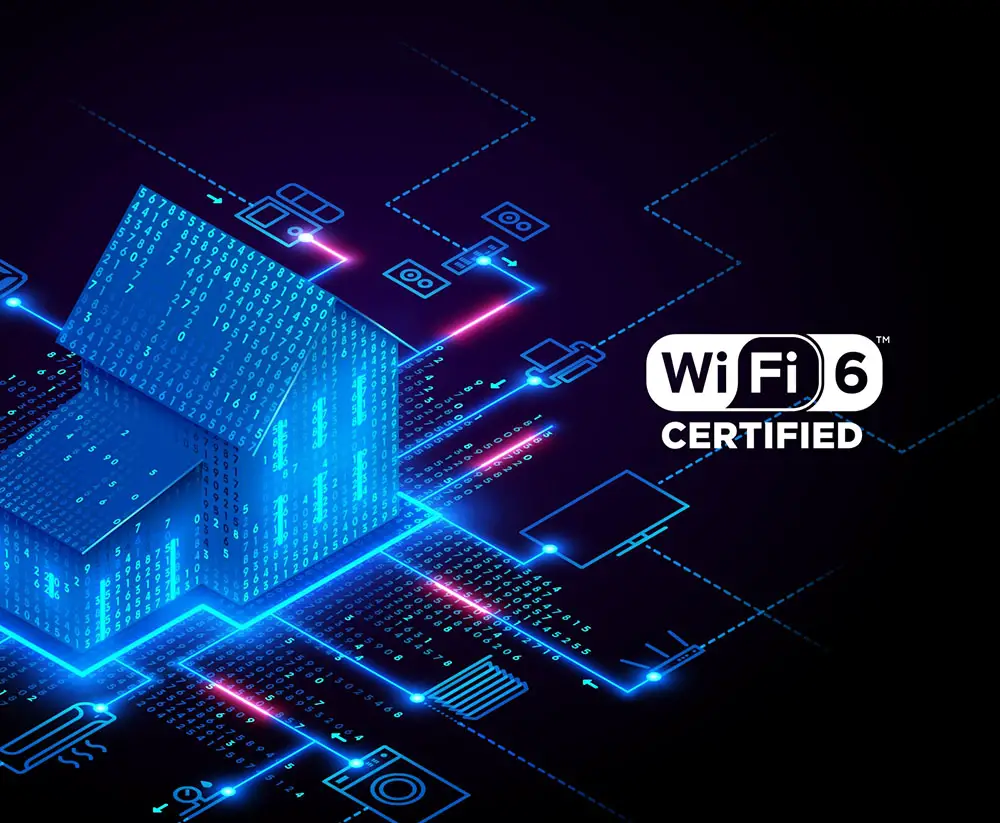
And since we talked about online the LG G2 comes with upgraded wireless capabilities as it now supports WiFi6 (802.11ax) along with Bluetooth 5.0.
OS, Apps and Features
The new G2 OLED is using LG’s latest webOS 22, which is found in all their 2022 releases, and while this is not a major upgrade compared to last year there are certain improvements and additions that are worth of mentioning.
WebOS’s UI is still taking up the whole screen and provide you with far more visual information than any of the previous versions ever did. This was a change made last year and seems to continue in 2022. We do get that some may prefer the old design that could still allow you to watch what was on screen but this is completely a personal preference.
The latest webOS looks a lot like Google TV and its layout. It seems that smart TV platforms opt for a more personalized experience and as such the new webOS 22 tries to provide you with options that are tailored for your viewing habits. As such there are personalized ads, recommendations based on your viewing patterns both for streaming services and broadcasting channels and even shopping suggestions.

And here is the first addition in the 2022 version as now we have user profiles and each family member can have their own favorite settings and streaming apps. Keep in mind that these user profiles do not extend to the image settings of the TV itself as these will remain universal.
When you first look at the new design you will certainly feel like it’s a cluttered mess but if you spend a few minutes with it most of its architecture will dig in and you will get the hang of it fairly fast. By pressing the Home button the main webOS page opens where you still get a single row of your apps on the bottom that you can re-arrange any way you want.
Once again on the top you get three big tiles for sponsored content, weather and time along with search. Below a single row with recommendations depending what LG’s algorithm believes you would like to watch. Under the apps row there are many more options to choose from like the Home Dashboard, broadcasting channels, shopping recommendations, Sports Alerts messages and much more.
Another thing that we did notice was that the new webOS felt more quick and more responsive than before. Apps would open faster and navigation felt even more smooth which may have to do with the new SoC that the G2 OLED uses this year.
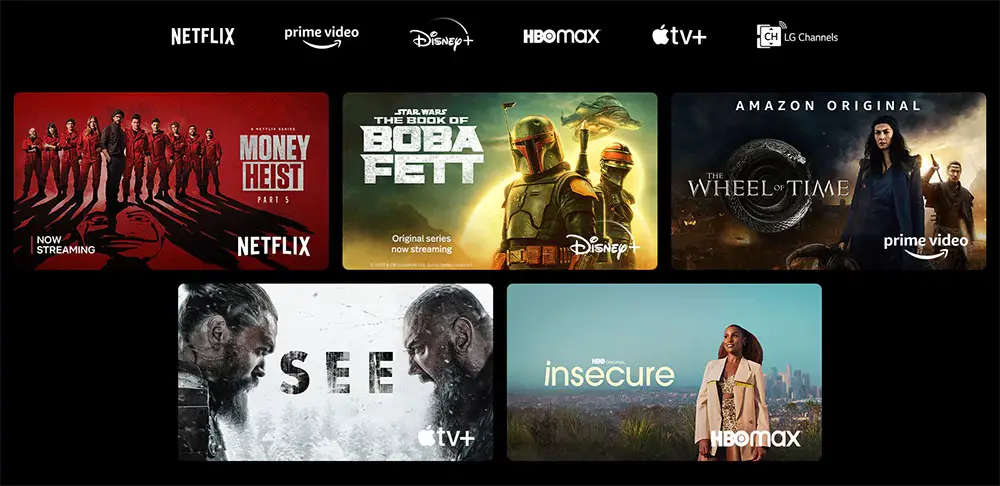
One thing that hasn’t changed in the new 2022 version of webOS is app support and as such you will find all the apps you may need with more available from the online store for downloading. All the big players are present with Netflix, Youtube, Amazon Prime, HBO, Vudu, Hulu, Google Play Movies, Disney+ and Apple TV+ just to name a few of the most notable ones.
Other available apps include Apple Airplay 2 and Apple Homekit. With Airplay 2 you can stream content from other Apple devices on your TV while HomeKit lets you control certain aspects of the TV through your mobile device.
Another feature that makes a comeback this year is Sports Alert. You can set your favorite team on the TV and the G2 OLED will inform you when a match will be shown and in which channel while can also give you score updates and the likes. The Sports Alert feature seems to be working with the internal tuner and it gives you the ability to choose from a wide range of teams and sports.
And since we are talking about a smart TV platform we could not go by without mentioning voice control functionality. LG has included not only their own ThinQ AI that you can use to search for various information but also the two most used voice control platforms including Amazon Alexa and Google Assistant. By using the Magic Remotes built-in microphone you can issue your commands like search for a specific TV show or control your TVs volume and change channels.
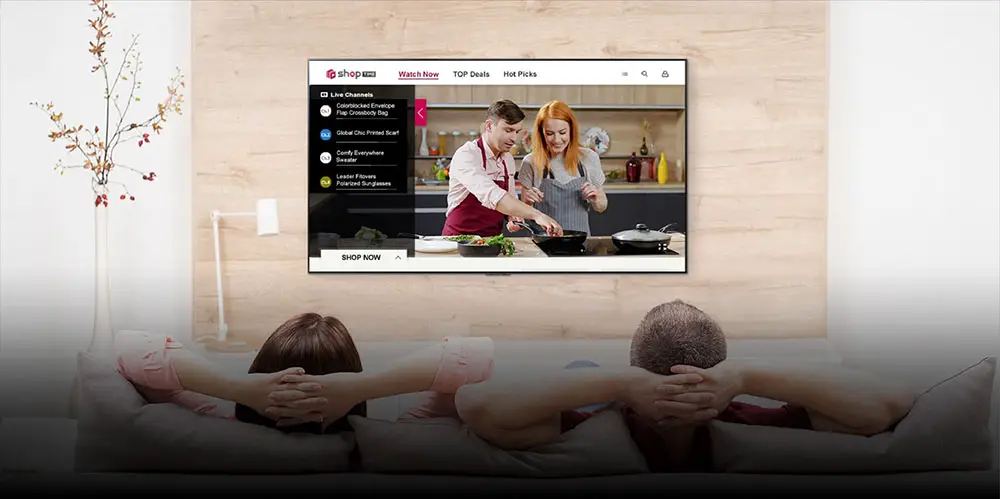
There is also mobile app support if you prefer that instead of using the included remote. LG is using their ThinQ app that is supported both by Android and iOS devices and with it you can issue some basic commands to your TV.
For another year we find what LG calls Home Dashboard which is a nice little feature that lets you have an overall look at all the connections of the TV. From last year the Home Dashboard has been fully intergraded into the webOS Home screen making its access faster than before.
Other new features in 2022 is the room-to-room sharing for viewing cable or satellite content on another TV at home and Multi-View capabilities including Picture in Picture (PiP) and Picture and Picture (PaP).
Overall the new webOS 22 may not be such a drastic change as was webOS last year but still feels smoother, faster and adds a few new features like user profiles and Multi-View capabilities that may appeal to some users on top of all the other features we got from last year making the new webOS one of the best versions yet.
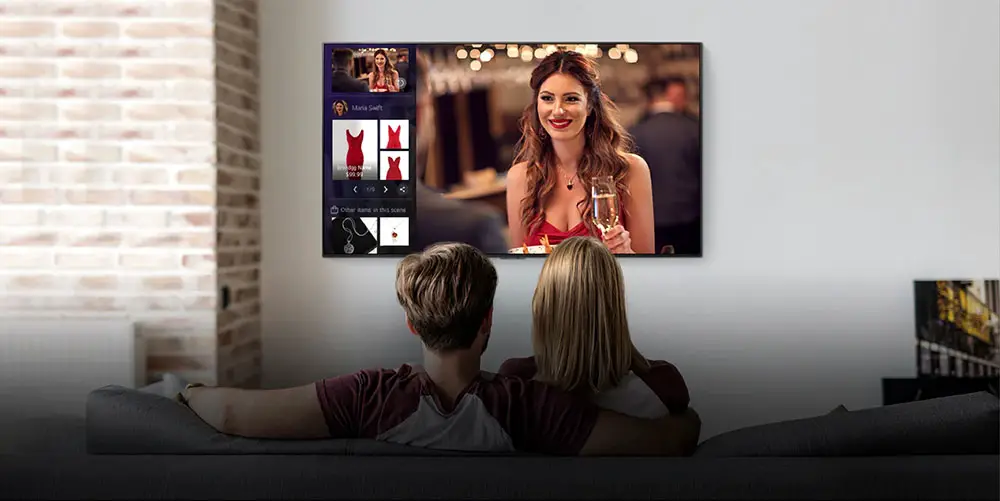
Final Thoughts
A lot of people are asking about the differences between the C2 and the G2 and if it worth it to go for LG’s 2022 flagship instead of the more affordable C2. Having finished our tests we can say that their differences comes down to three areas. The design, the higher brightness of the G2 and the slightly better audio system of the G2. Now if these justify the extra cost is really up to you.
As for the G2 in specific, the TV has everything it needs to be a real flagship. Excellent upscaling, great SDR and HDR brightness, lifelike colors, excellent viewing angles, solid motion performance, strong gaming capabilities with a lot of features and very low input lag, full HDMI 2.1 support and an updated webOS that is the best version yet.
On the downsides there is no 120Hz BFI this year, no HDR10+ support, no DTS audio either from internal apps or through the eARC port and the obvious risk of burn-in that all OLED TVs still have even if this last one is not such a big problem anymore. Also audio is nothing extraordinary to talk about and you surely need a dedicated surround system to go with its amazing image quality.
The LG G2 OLED is the best OLED TV LG has produced and is definitely an improvement over last year’s G1. It surely has a few problems, as no TV is perfect, but if you want the best LG TV to this day then this is the one to consider, no questions asked.
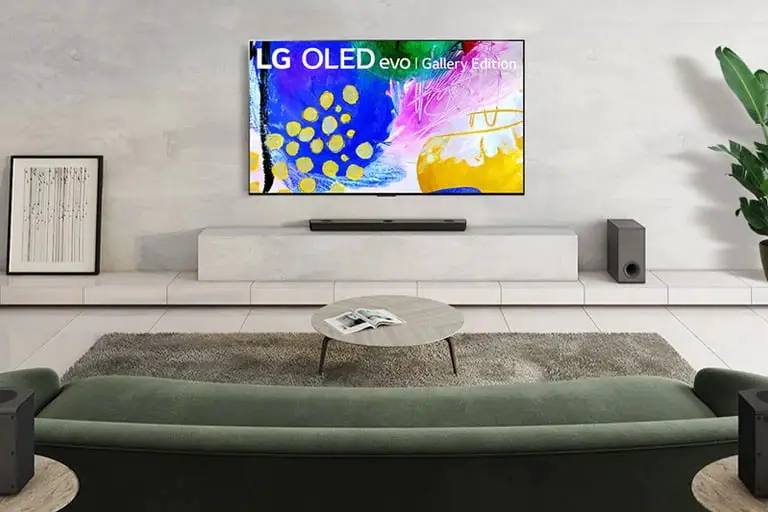
For more reviews you can check our dedicated 4K OLED TV reviews list or even look at our Product Reviews Table where you can find the brand and specific product you are looking for.
Cheapest Places to Buy :
*We are a reader-supported website. When you buy through links on our site, we may earn a small affiliate commission at no extra cost to you. Home Media Entertainment does not accept money for reviews.*
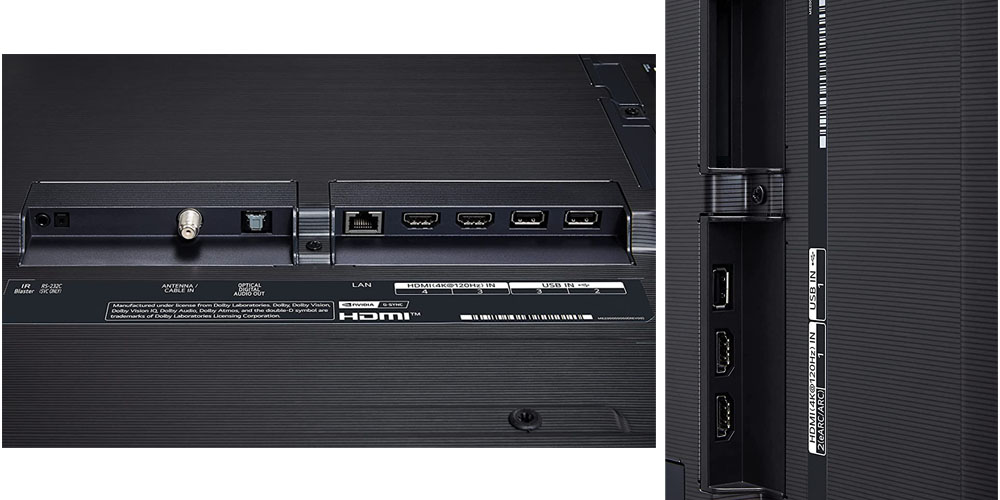
Very nice and detailed review. One of the best I have seen for the G2 from everywhere I looked. I am on the lookout for a new TV and I am between this, the Sony A95K and the Samsung S95B. Can you tell me which one of the three you would choose and which one is the best?
We still haven’t tested the A95K, review is going to come soon so until then I cannot comment on the Sony. As for the S95B and the G2 keep in mind that these two are different technologies and the new QD-OLED has some major advantages over the OLED of the G2. The S95B is amazing and with the latest update that fixes some issues with image accuracy we would say is the overall better TV.
Nice review. I would love if they would make the G2 into a regular series and not a Gallery one. Having to pay extra for the stand is a bit of annoying for such a premium product. But the TV is surely nice, I have seen it up to close and its image quality was amazing.
Hey Albert. I agree with you on the stand. A lot of people are interested in LG’s flagship so it should be a standard accessory. But I think if you are ready to pay such a premium then most wouldn’t care to pay this little extra.